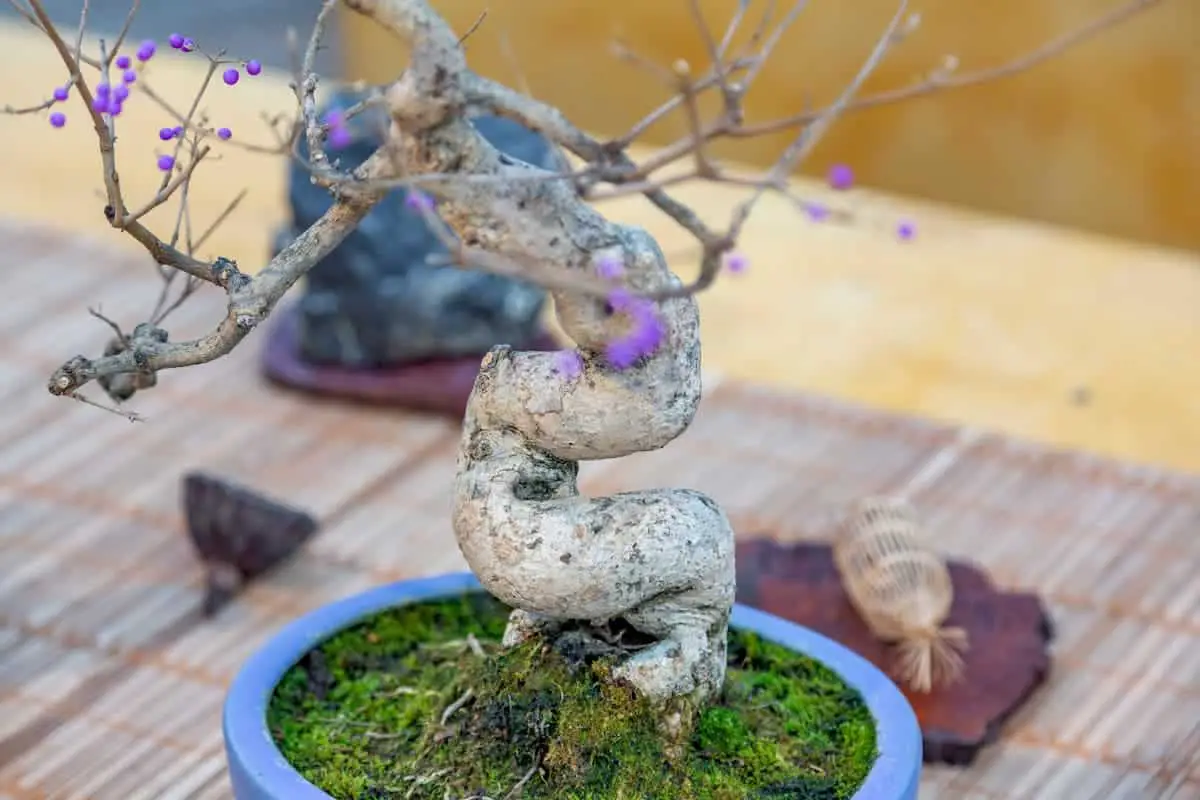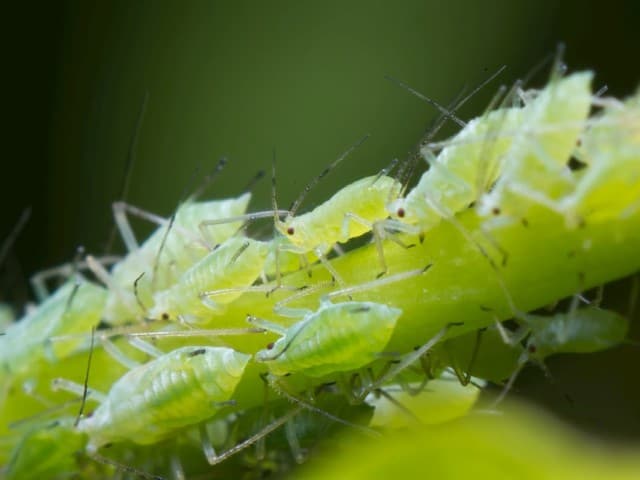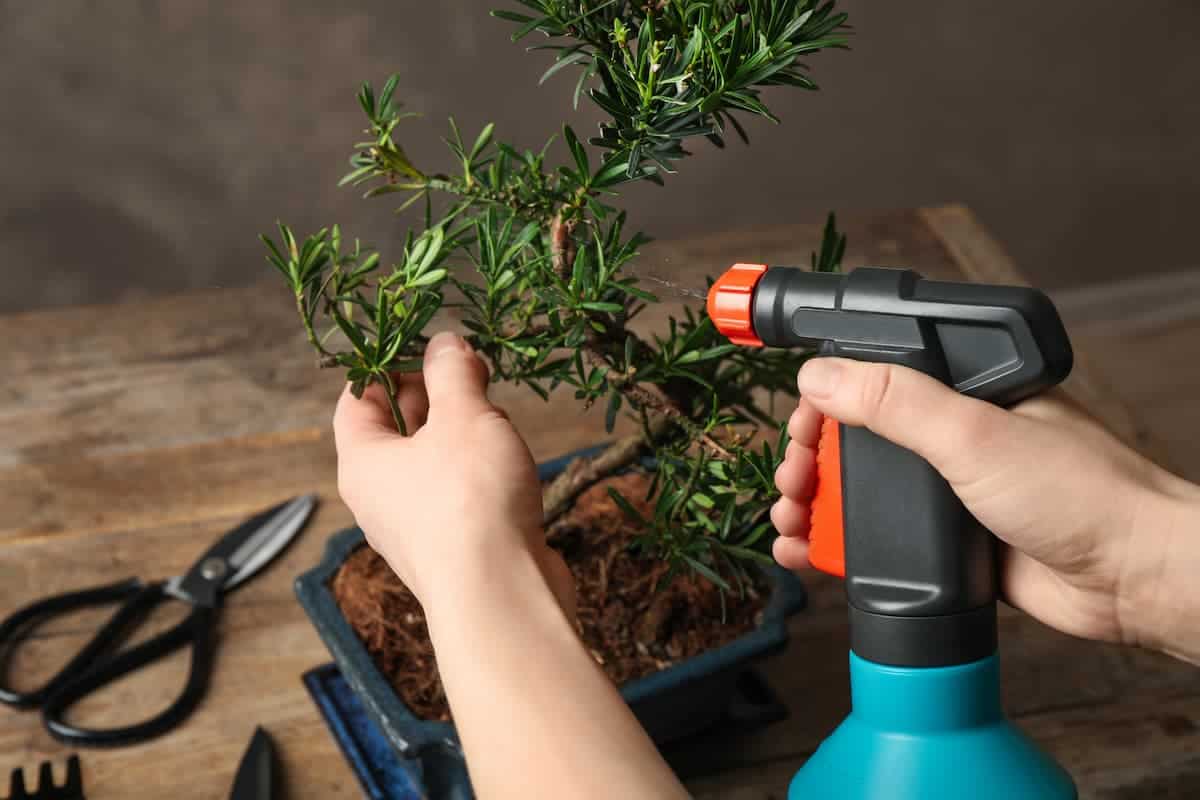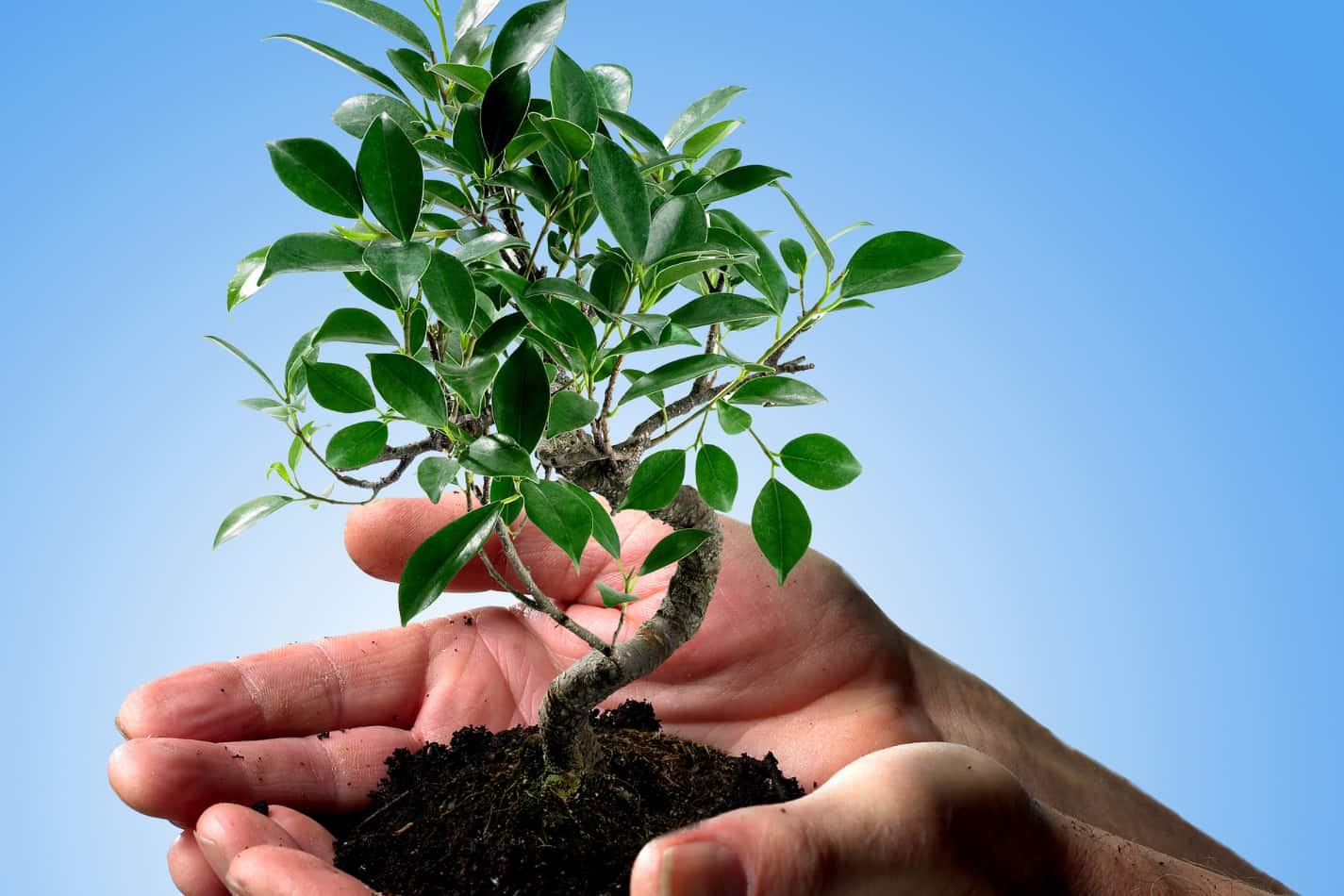Growing a small tree is the one thing we all know we’ll love, having something small and refreshing in any room of our house. The trick that few people realize is that growing a tree yourself can be easy, so can you bonsai any tree?
With the trees that you buy at shops only being a good place to start if you know nothing about bonsai trees. Fortunately, if you have neither the money nor the will to buy one you can make your bonsai tree.
To create your bonsai tree, you will need three things, a good pot, proper soil, and some kind of perennial woody-stemmed tree or shrub. These are the basics, and they will allow you to easily grow a small tree, with the soil and pot being something you can experiment with a bit. You will need a tree with a strong stem to support itself, otherwise, your bonsai tree will fall over by lack of growth and too much weight.
However, it can be a lot more challenging than that, with many people hoping to grow something that they’ve seen on TV without realizing that their area is not a healthy place for these trees.
Some of the most amazing bonsai trees are specifically grown because they are native to those areas, sometimes you will have to learn more about your local area than you ever thought. Several other factors, you should know to affect the tree you eventually choose to grow.
Knowing how to start a bonsai tree can be a challenge, with many bonsai owners preferring to begin their bonsai with something already existing, be different!

How Do You Choose a Plant to Grow?
Choosing which plant, you will grow from a young age is the most important part, with many beginner bonsai owners accidentally choosing some of the most challenging plants to grow.
There are only a few things you need to know about choosing the right plant, these are both obvious once you know about them but surprisingly difficult to apply once you know them.
The plant you choose needs to be native to your environment if you have a warm dry climate a tree that prefers tropical environments won’t last longer than a few weeks.
Further, if you are in a high humid in summer but extremely cold in winter country then you will face a lot of trouble with plants that prefer desert environments.
You will want to choose a tree that is already growing near you, one that has shown it loves the environment you are in, to create a bonsai tree.
This simple choice will be the difference between a bonsai that lasts only your lifetime or one that is still going strong once your great-grandchildren reach their retirement age. A good bonsai will want to thrive and almost grow out of control in your house, even with you trimming them.
What Are the Steps to Planting it in the First Pot?
There is a multitude of things you will have to do once you have your chosen plant, usually all involving the planting of your bonsai.
The art of growing a bonsai from nothing can be quite challenging, with many bonsai growers failing several times before finally getting it perfect.
There are a few basic steps you will have to follow to get your tree to grow properly, some of which will become a yearly maintenance tradition.
Many people think a bonsai is simply spraying and praying, fortunately, those that love their trees know this is not true. These are the basic steps you need to grow your bonsai tree, with perfection and relaxation, thought with short spurts of growth here and there.
Plant Growth
Growing a bonsai tree starts with one simple thing, allowing the tree or plant to grow until it is a proper size. Many bonsai growers will have areas of their garden to do this or normal pots where they do this.
This is ideal to allow the tree to grow easily and avoid it having to overcome the stress of being repotted. Most bonsai owners will let the tree grow until its stem has started sprouting properly.
It should be noted at this point that the tree will need to be wired and trimmed to stop it from simply growing straight upwards.
Forcing the tree to become a bonsai tree as much of its energy goes towards growing the stem and roots. Once your tree has started growing you will know you are on the right track.
Routing Your Bonsai Plant
Once your bonsai has started growing properly in the ground or the normal pot that you have for it, the time will come for you to repot the tree into its final pot.
Many Bonsai owners will have a decorative pot where they want their bonsai to grow in, usually being small enough to stand on the end of a desk somewhere.
Removing the plant and placing it in the pot where it will be forever is the first step to creating a true bonsai tree. You should give it a mix of fresh and old soil, and let the tree grow for around a week prior.
This will allow it to overcome the shock and damage done by relocating the tree into a new pot.
Careful Pot Selection
This is one of the most challenging things you may find yourself doing, as many people will accidentally choose a pot that is too shallow for some trees while choosing something too deep for others.
The right pot will only be around two inches deep, allowing you to easily plant the trees, with a few decorations next to it.
Your pot may be a lot more decorative than you expect, with many bonsai owners choosing their first pots because the pot helps the tree look a lot more magnificent.
Some of the best pots for bonsai trees are simply elongated, allowing you to add a few decorative rocks next to the tree. Several pots are painted on the outside, making the pot a unique decoration in itself.
Soil Setup and Selection
One of the head-scratching parts of creating your bonsai is selecting the right soil for your tree to grow in once it has been freshly repotted into its new pot.
If you have started growing a tree that already grows in your garden then it may be best to simply get some soil from your garden, mixing it with a few fertilizers to balance everything.
However, it is important to mix new soil with some of the older soil, allowing your bonsai to grow in soil that is already perfect for it, just with a few added nutrients added in.
If you have ever wondered why a tree suddenly dies when it has been replanted into the freshest possible soil, this would be the reason, the new soil may be too acidic or nutrient lacking. Something that the old soil would have helped to control.
Trimming Overgrowth
Now that your tree is planted in its forever pot, the soil is perfect, a rock has been placed neatly next to it, and the tree has shown it is capable of growing easily in its pot the next step needs to be taken.
You will need to start trimming off the excess limbs, leaves, and anything else you may not want to be growing on it. Many people will want to head straight to wiring, however, it is important to trim off everything that can cause the tree to grow in the wrong direction.
It is at this point that you will have to decide which limbs of the tree you want to grow, with many growers preferring to only have a few limbs that ever grow large.
Getting the best out of your tree will mean that you are routing all of its growing energy away from massive limbs, bunches of leaves, or flowers.
Trimming your bonsai most of the year is what helps it grow a strong stem and even stronger roots.
Wiring
Once you have trimmed everything that can use too much energy from your bonsai tree you will need to start wiring everything up.
This is one of the things that nature lovers may find cruel if they do not know why it is done to bonsai trees. It comes as a shock to most, but bonsai trees are not just naturally shaped the way they are, wiring does this.
With limbs removed that is too much, and the leaves trimmed off you will wire the tree to force it into the shape that you need.
Wiring is forcing the trunk of the tree to grow in specific shapes, with the limbs also being forced into shapes that they may usually never follow.
Doing this properly is how you get limbs that are thick and strong growth on a tree that is only a few inches long, the wiring should be done for a few months every year to ensure proper growth in the early stages of the tree.
Overall Care and TLC Measures
Once you have your tree planted, trimmed, decorated, and wired up like something out of a bad romance novel you will need to prepare for the long haul.
Your tree should be growing on its own by now, happily growing leaves as the seasons change, however, once you get here the work gets more complicated and you will need a guide on every problem that appears.
Bonsai trees can be attacked by worms, eaten by beetles, infected with molds, or even just damaged by the wrong kind of air.
Taking care of your bonsai trees for the next eternity means you are constantly measuring the progress of each part, taking care to remove things that can be damaging, while adding things that help.
Sometimes decorative rocks are there to help the tree grow and not just there to make it all look appealing.
Managing Growth
You have everything down, but you will still see that your bonsai tree will grow in strange ways as things continue.
With this you will learn the needs of your tree and grow with it, experiencing new things each day as it continues to grow with ease.
If you want your bonsai to grow healthy forever then you will need to let it grow a little each year.
For every few millimeters that the trunk grows the tree will gain a bit more length, it can take well over 40 years for a bonsai to stop growing entirely.
This is why you need to constantly watch and control its growth, repotting the tree as it grows stronger, heavier, and much more like an ancient bonsai than anything else.
How Long Will it Take to Grow Your Bonsai?
The most pressing thing you will have on your mind once you have chosen your tree is how long it will take to have anything that could be considered a bonsai tree.
Many people suffer from the challenge of not being patient enough to wait for their bonsai to grow, thinking that the entire process will be completed within a few weeks.
However, it can take up to 10 to 15 years to grow a bonsai tree entirely, with the first repotting into a proper pot only taking place around one year after the plant has started growing.
Bonsai tree growing is not simply throwing a few seeds and then the next season having your fruit come to bear. It is the art and challenge of being patient for so long that you can barely remember when you first started the journey.
When you now go and see bonsai trees that are growing in fancy and beautiful ways all over the world you should appreciate the amount of work that has gone into them. Some of the oldest bonsai trees in the world are well over 400 years old and have survived nuclear bomb attacks.
When Will You Know Your Tree Needs to be Repotted?
Knowing when to replant the tree into something a bit more structured will help you to keep it healthy, however, it cannot be done at any moment in the tree’s growth, nor should it be done when the tree still has space to grow.
However, there is a time when the tree will stop growing and you need to know how to recognize this.
The first sign that a tree needs to be repotted is when the leaves are not looking so healthy or full as usual, with the roots of the tree taking up more than 90% of the pot.
You will need to repot the tree into something slightly larger, with the proper care you will be able to stop the tree from growing any larger. There are a few trees that during the repotting session can have their roots trimmed as well.
Repotting the tree is the chance you need to give fresh soil, check on the health of the roots, and if you need it to have the limbs grow in short spurts in the right directions.
Repotting a bonsai tree is followed by some slow down in growth which can be quickly followed by larger and faster growth. It will be your job to stop this growth from making your tree grow out of being a bonsai.
What Popular Trees Are Chosen?
The world of bonsai trees is vast, with every country on earth having some trees that they like to use for their bonsai plants.
Many countries have their national tree as some type of bonsai somewhere while many other countries have traditional trees they like to use for their bonsais.
Some of the most average looking trees can become amazing bonsai trees, you just need to be patient enough to have the tree grow in the right way.
These are some of the most popular trees from around the world to use as a bonsai plant!
- Ficus: This usually grows into an amazing tree when left to its own devices, easily becoming something that dominates a yard with both shade and beauty. As a bonsai, it is an amazing indoor addition and will deliver some wondrous growth with its trunk growing strong and thick whenever allowed.
- Celtic: One of the trees that always springs to mind when you imagine a bonsai tree, the Celtic bonsai grows a thick strong trunk that usually only has a few branches stemming from it. It is one of the most amazing plants to use for your bonsai garden and will have you taking care of it for days on end.
- Japanese Maple: A tree that is amazing and beautiful to find anywhere in the world, the Japanese Maple has been a popular tree to use ever since bonsai trees were first created. Many Japanese bonsai gardens will have these as their centerpieces as the tree grows quickly and healthily without much attention needed after the first few years.
- Chinese Elm: A tree that looks normal in any garden the Chinese Elm is unique in the way that it can be shaped into several different growing patterns using the right wiring techniques. Most of these Bonsais look amazing and will leave you with a forever centerpiece.
- Pine Trees: Pine trees in the wild are unique, pine trees that have been turned into a bonsai are amazing. These trees easily and comfortably allow you to grow something with a thick trunk that looks amazing, that might just be because we love them a bit more than other trees.
- Junipers: Another popular tree used by Japanese bonsai masters are Juniper trees, as they are versatile and quite hardy once fully grown. However, getting this tree to grow into a bonsai can be a challenge that many growers enjoy more than anything else.
- Azalea: If you have watched a cartoon or anime that has some type of bonsai tree in it at one point then this is most likely the tree that was used. Azaleas bloom with brilliant pink flowers and when they are made into bonsai trees they can quickly become the pride of most growers.
- Bougainvillea: A tree out of the South Americas Bougainvillea grow fast and strong, and once fully grown, even in Bonsai form, will lend an air of exoticness that you cannot find with most other trees. They are amazing but also some of the most complicated as many beetles love to eat these trees.
- Wisteria Trees: Wisteria trees are not always trees; they can be amazingly large with the largest flowering plant on earth being a Wisteria. As a complement to that, the Wisteria can easily become a small hardy plant to add to your bonsai collection that will give color and some African qualities to your home.
Final Thoughts on Can I Make My Own Bonsai Tree
Growing a bonsai from nothing or simply taking over one that has been in your family forever can be a challenge.
However, if you have the time and the patience you can quickly become the lover of one of the most amazing hobbies on earth. Just imagine how amazing your home will be when you have a few bonsais to add to your décor.
Alternatively, give nature a bit of help in retaking the human world by leaving behind a few trees that can take over an empty house.
If you are just learning about bonsai trees and looking to purchase high quality trees that will likely live longer than you then I would highly suggest checking out Bonsai Boy Trees as they are a long lasting New York business that provides trees for all price ranges!






